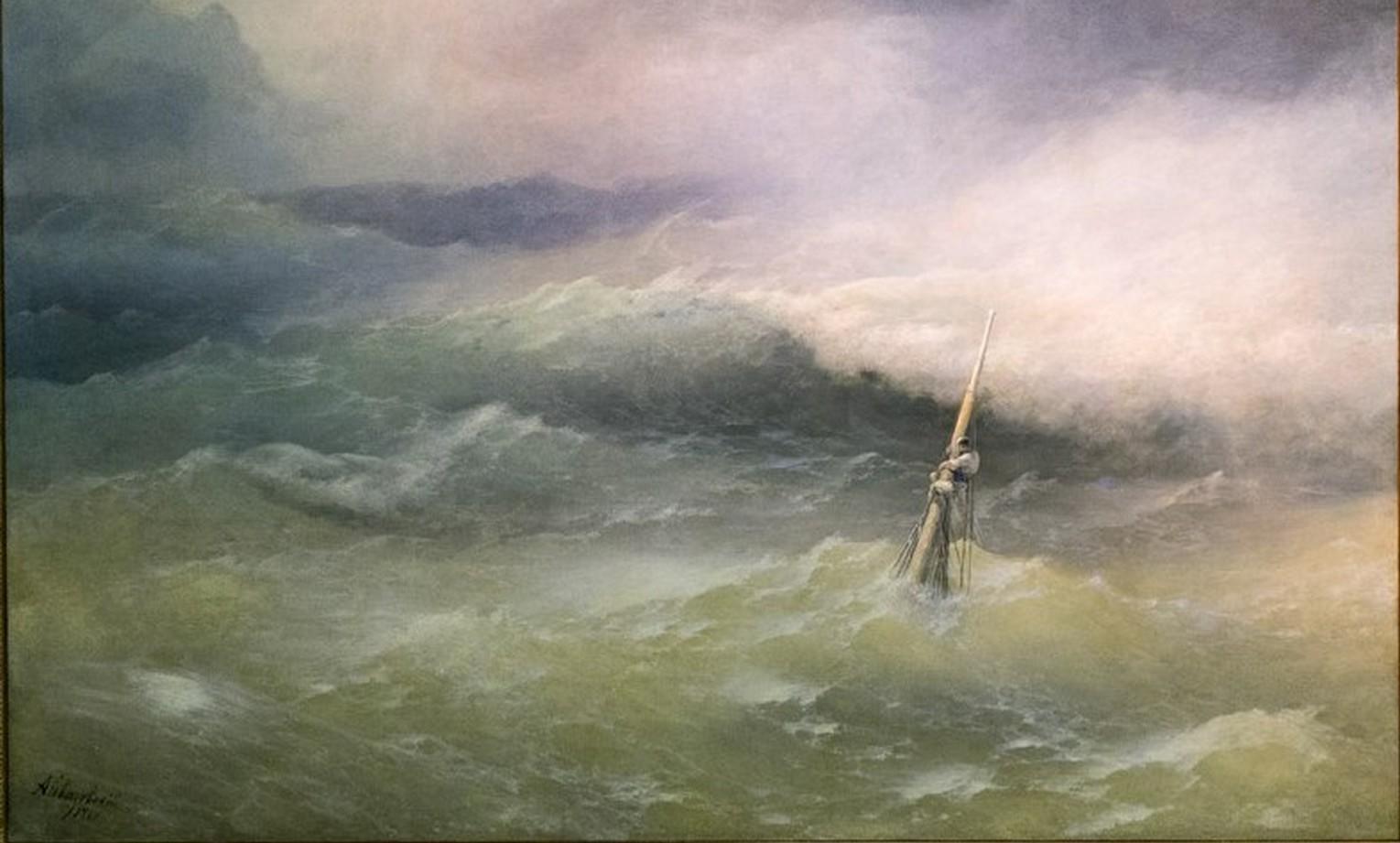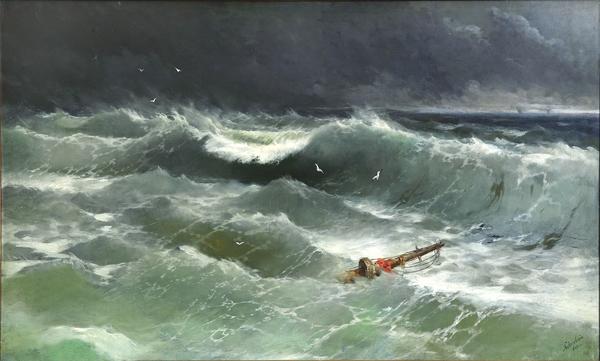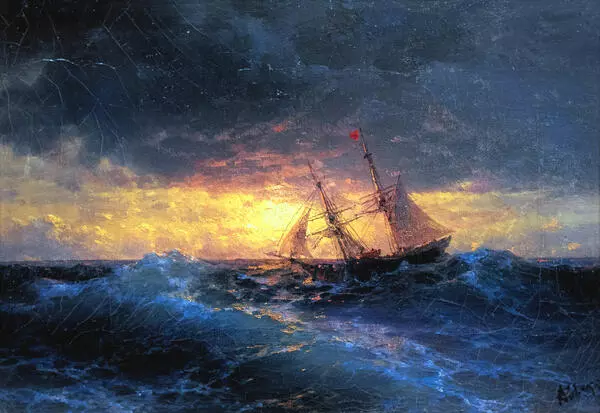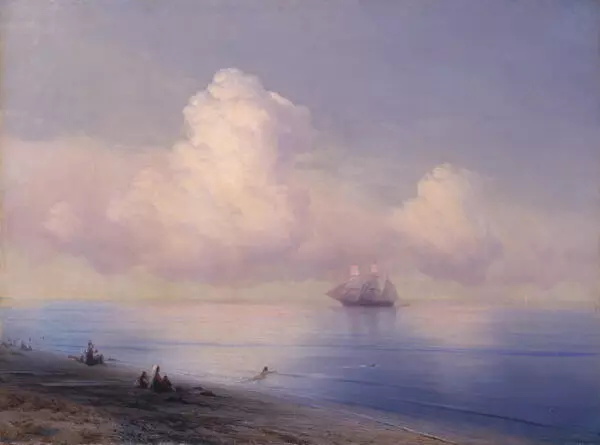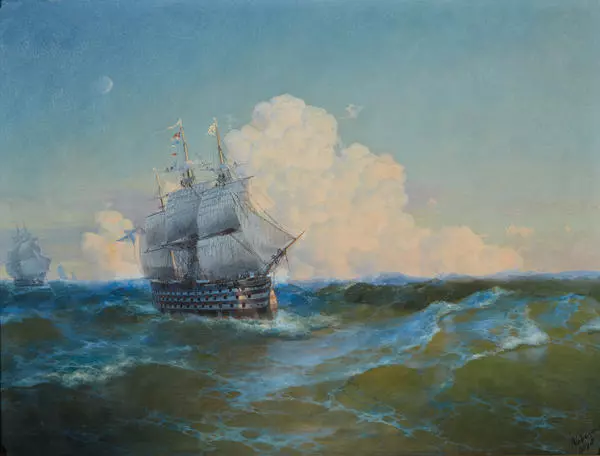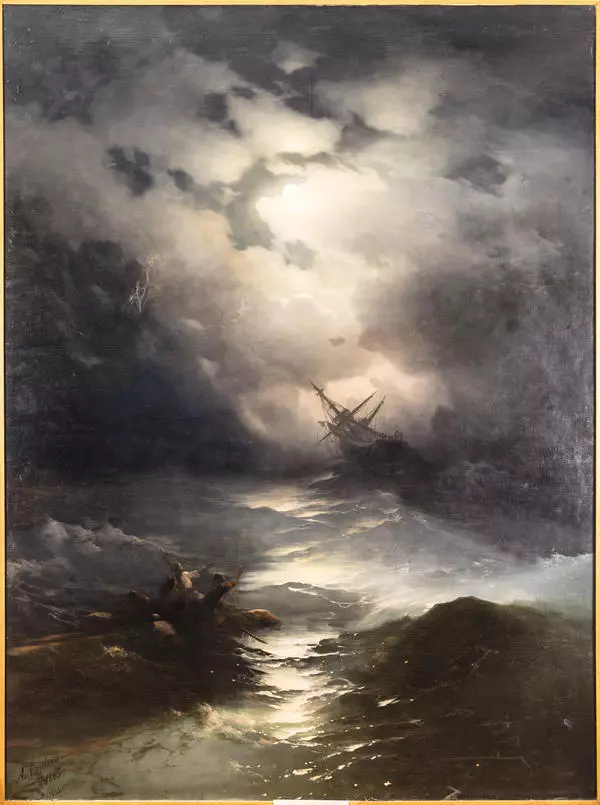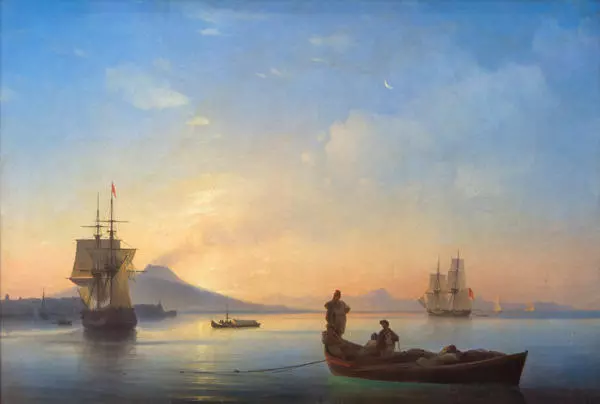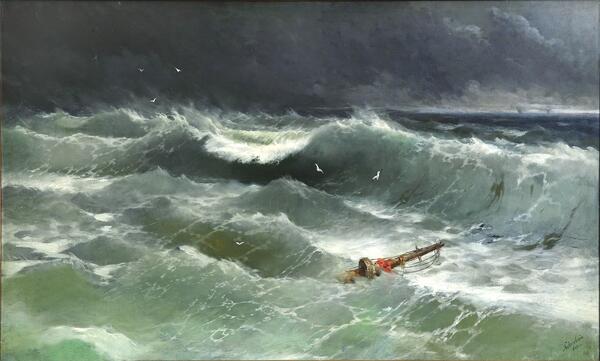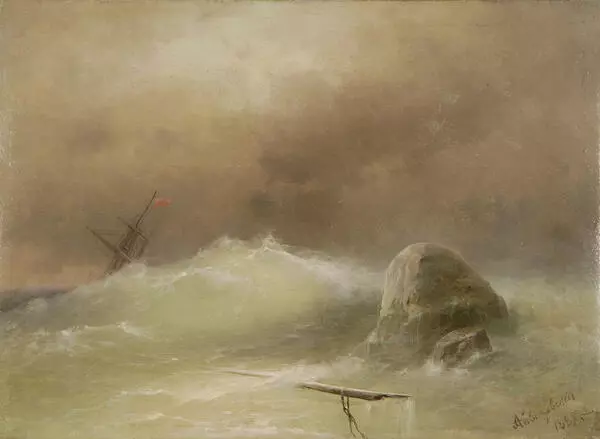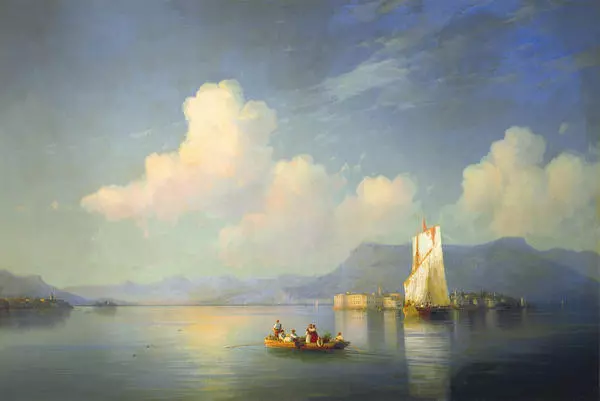Ivan Aivazovsky painted ‘Storm at Azov Sea’ in 1886. The painting repeats the subject of the same seascape of 1886. The first variant of the painting also shows a mast stump drifting in the sea — the last remnant of a ship. Holding to it is the only surviving sailor. The author adds this detail to narrate the story.
1 / 2
Storm at Azov Sea
Creation period
1886
Dimensions
84x92 cm
Technique
Oil on canvas
Collection
Exhibition
45
Open in app#1
Ivan Aivazovsky
Storm at Azov Sea
#2
#8
In the second version the painter removed the human figure, therefore adding more tragedy to the subject. The author augments the tension using contrasting colors: white wave crests against the background of the dark sea, and light seagull shapes contrasted with the deep water shadow.
#6
Ivan Aivazovsky fell in love with the sea in his childhood. The future painter grew up in the Crimea. The terrace of the house on the outskirts of Feodosia offered a panoramic view of the bay. From there Aivazovsky admired the constantly changing color of the waves and massive ships. The painter’s biographer Nikolai Barsamov wrote: “It was scary in the small town when a storm started. Children saw huge waves beating wildly against the faraway cape of St. Ilya and threw to the shore fragments of wrecked long boats. Their imagination pictured tough and unequal struggle of seamen with raging sea. Since his childhood the young painter felt for the people struggling courageously with natural calamities”. As years passed by, Aivazovsky grew more and more fond of the sea subject.
#7
His life in the Crimea and a multiple journeys allowed Aivazovsky to see different states of the sea: raging and calm, lit with sun and moonlight. These impressions laid the foundation for his future paintings. Aivazovsky possessed excellent visual memory. He seldom painted from life and almost always worked in his studio. He recreated subjects for future pictures from sketches, from memory or his imagination.
By the time this painting was created the seascape painter established his own style. He had already painted “The Ninth Wave”, “Moonlit Night” and “Battle of Chesmen”. His works were highly appreciated by Nicholas I and the Turkish Sultan. He received the title of professor in the Imperial Academy of Fine Arts and cooperated with the academies in Rome, Paris and Florence. He was equally accepted as “their own kind” by both romantic and realist painters. The former for the heroic pathos of his seascapes, and for the fact that nature in his paintings was always more grandiose than in everyday life. The latter — for incredibly accurate portrayal of the sea.
#9
Yaroslavl Museum of Fine Arts
read morehide
00:00
00:00
1x
Storm at Azov Sea
Creation period
1886
Dimensions
84x92 cm
Technique
Oil on canvas
Collection
Exhibition
45
Open in app
Share

